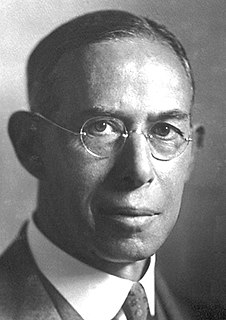
Joseph Erlanger was an American physiologist who is best known for his contributions to the field of neuroscience. Together with Herbert Spencer Gasser, he identified several varieties of nerve fiber and established the relationship between action potential velocity and fiber diameter. They were awarded the Nobel Prize in Physiology or Medicine in 1944 for these achievements.

Mount Vernon is a neighborhood of Baltimore, Maryland, located immediately north of the city's downtown district. Designated a National Historic Landmark District and a city Cultural District, it is one of the city's oldest neighborhoods and originally was home to the city's wealthiest and most fashionable families. The name derives from the Mount Vernon home of George Washington; the original Washington Monument, a massive pillar commenced in 1815 to commemorate the first president of the United States, is the defining feature of the neighborhood.

Bolton Hill is a neighborhood in Baltimore, Maryland, with 20 blocks of mostly preserved buildings from the late 19th century. It is listed on the National Register of Historic Places, preserved as a Baltimore City Historic District, and included within the boundaries of Baltimore National Heritage Area. The neighborhood is bounded by North Avenue, Mount Royal Avenue, Cathedral Street, Dolphin Street, and Eutaw Place. Bolton Hill is a largely residential neighborhood with three-story row houses with red brick, white marble steps, and high ceilings. There are also larger more ornate originally single-family houses, many houses of worship, parks, monuments, and a few large apartment buildings. Many significant residents have lived in the neighborhood, including F. Scott Fitzgerald, Woodrow Wilson, the Cone sisters, and Florence Rena Sabin.

The Thomas Viaduct spans the Patapsco River and Patapsco Valley between Relay, Maryland and Elkridge, Maryland, USA. It was commissioned by the Baltimore and Ohio Railroad (B&O); built between July 4, 1833, and July 4, 1835; and named for Philip E. Thomas, the company's first president. It remains the world's oldest multiple arched stone railroad bridge.

Elmer Verner McCollum was an American biochemist known for his work on the influence of diet on health. McCollum is also remembered for starting the first rat colony in the United States to be used for nutrition research. His reputation has suffered from posthumous controversy. Time magazine called him Dr. Vitamin. His rule was, "Eat what you want after you have eaten what you should."
Marguerite Davis was an American biochemist, co-discoverer of vitamins A and B with Elmer Verner McCollum in 1913. Their research greatly influenced later research on nutrition.
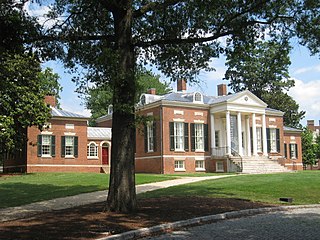
The Homewood Museum is a historical museum located on the Johns Hopkins University campus in Baltimore, Maryland. It was listed as a National Historic Landmark in 1971, noted as a family home of Maryland's Carroll family. It, along with Evergreen Museum & Library, make up the Johns Hopkins University Museums.
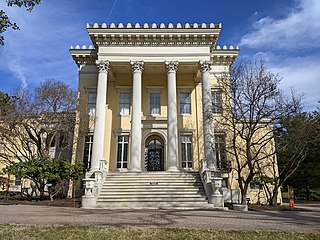
Evergreen Museum & Library is a historic house museum and research library in Baltimore, Maryland, United States. It is located between the campuses of the Notre Dame of Maryland University and Loyola University Maryland. It is operated by Johns Hopkins University along with Homewood Museum; both make up the Johns Hopkins University Museums.
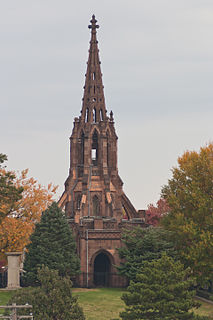
John Rudolph Niernsee was an American architect. He served as the head architect for the Baltimore and Ohio Railroad. Rudolph also largely contributed to the design and construction of the South Carolina State House located in Columbia, South Carolina. Along with his partner, James Crawford Neilson, Rudolph established the standard for professional design and construction of public works projects within Baltimore and across different states in the United States.

Clifton Park is a public urban park and national historic district located between the Coldstream-Homestead-Montebello and Waverly neighborhoods to the west and the Belair-Edison, Lauraville, Hamilton communities to the north in the northeast section of Baltimore, Maryland, United States. It is roughly bordered by Erdman Avenue to the northeast, Sinclair Lane to the south, Harford Road to the northwest and Belair Road to the southeast. The eighteen-hole Clifton Park Golf Course, which is the site of the annual Clifton Park Golf Tournament, occupies the north side of the park.
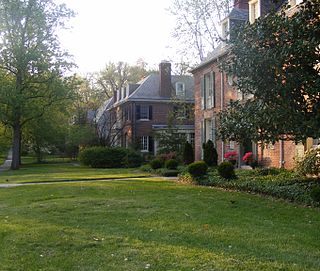
Guilford is a prominent and historic neighborhood located in the northern part of Baltimore, Maryland. It is bounded on the south by University Parkway, on the west by North Charles Street, Warrenton and Linkwood Roads, on the north by Cold Spring Lane and on the east by York Road. The neighborhood is adjacent to the neighborhoods of Tuscany-Canterbury, Loyola-Notre Dame, Kernewood, Wilson Park, Pen Lucy, Waverly Oakenshawe, Charles Village, and the universities of Johns Hopkins and Loyola University Maryland. The neighborhood was added to the National Register of Historic Places in 2001.

The Ira Remsen House is a historic house at 214 West Monument Street in Baltimore, Maryland. Built in the 1880s, this nondescript row house was the home of Ira Remsen (1846-1927), a noted chemist and educator who served as president of Johns Hopkins University from 1901 to 1913, and influenced a generation of chemists and chemistry researches with his textbooks and pedagogical methods. This house was listed on the National Register of Historic Places and designated a National Historic Landmark in 1975.

The College of Medicine of Maryland, or also known since 1959 as Davidge Hall, is a historic domed structure in Baltimore, Maryland. It has been in continuous use for medical education since 1813, the oldest such structure in the United States. A wide pediment stands in front of a low, domed drum structure, which housed the anatomical theater. A circular chemistry hall was housed on the lower level under the anatomical theater.

The William H. Welch House is a three-story rowhouse located at 935 St. Paul Street in Baltimore, Maryland. Probably built in the 1880s, it is notable as the residence of William H. Welch (1850-1934) from 1891 to 1908. Welch was one of the "Big Four" founding professors at Johns Hopkins Hospital, and an important conduit of European medical research methods and ideas to the United States. He was also the first dean of the Johns Hopkins University School of Medicine and the first director of the Johns Hopkins School of Hygiene and Public Health. The house was designated a National Historic Landmark in 1976, and is included in the Baltimore National Heritage Area.
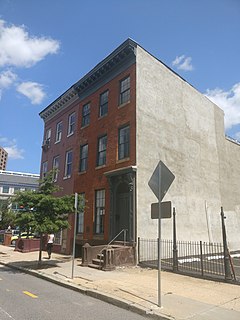
The Henry AugustRowland House is a historic row house at 915 Cathedral Street in Baltimore, Maryland. Built in the 1880s, this nondescript row house is historically important as the home of physicist Henry Augustus Rowland from 1889-90 until his death in 1901. It was listed on the National Register of Historic Places and declared a National Historic Landmark in 1975.

Seton Hill Historic District is a historic district in Baltimore, Maryland. It was listed on the National Register of Historic Places in 1975.

Brooklandville House, or the Valley Inn, is a historic restaurant and tavern building, and a former inn, located in Brooklandville, Baltimore County, Maryland. It is a 2+1⁄2-story stone structure facing the former railroad and dating from about 1832. It is associated with the Baltimore and Susquehanna Railroad, which crossed the property just to the south.
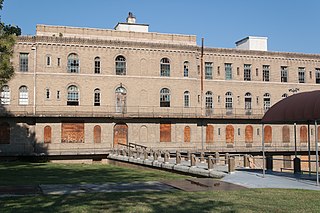
Sydenham Hospital for Communicable Diseases, also known as Montebello State Hospital or Montebello State Chronic Disease Hospital, was a hospital and is a national historic district in Baltimore, Maryland, United States. It was originally constructed in 1922–1924, and the campus consists of seven Italian Renaissance Revival style buildings: the main hospital building, the administration building, the kitchen, the nurses’ home, the laundry with servants’ quarters above, the garage, and the powerhouse. A residence for the Director of Medical Research was added in 1939. The campus was designed by noted Baltimore architect Edward Hughes Glidden.
The Johns Hopkins School of Public Health Department of Biochemistry and Molecular Biology (BMB) was established in 1916, as the Department of Chemical Hygiene. That same year, the Johns Hopkins School of Hygiene and Public Health was founded, as it was named then. Today, the school is named the Bloomberg School of Public Health and is part of the Johns Hopkins University in Baltimore, Maryland, United States.

The Hector F. DeLuca Biochemistry Building, originally known as the Agricultural Chemistry Building, is a historic structure on the campus of the University of Wisconsin–Madison. It was the site of the discovery of vitamins A and B, as well as the development of vitamin D processing.























